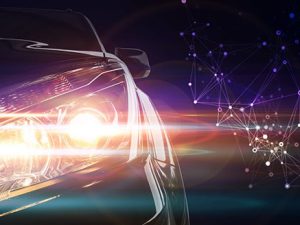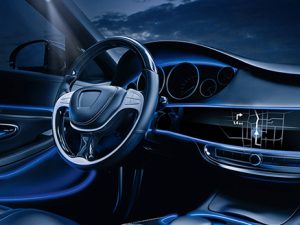Table of Contents
- What Are Smart Lighting Systems?
- The Role of Artificial Intelligence (AI) in Automotive Lighting
- Sensor Technologies That Enable Smart Lighting
- Benefits of Smart Lighting Systems
- The Future of Smart Lighting in Automotive Design
The automotive industry is undergoing a rapid transformation, with technology playing a crucial role in reshaping how vehicles are designed and operated. One of the most innovative advancements in modern cars is the development of smart lighting systems, which are significantly improving both the driving experience and road safety. These systems, powered by artificial intelligence (AI) and various sensors, are setting new standards for how vehicle lighting interacts with the environment. As we move toward a future of smarter and safer vehicles, the role of automotive lighting is evolving in ways that were once the stuff of science fiction. This article explores how AI and sensors are driving the evolution of automotive lighting systems and how these technologies are transforming the way we drive.
What Are Smart Lighting Systems?

Smart lighting systems in vehicles go beyond the traditional headlight and taillight functions. These systems adapt to real-time road conditions, driver needs, and environmental factors, enhancing both visibility and safety. At the heart of these systems are advanced sensors, cameras, and AI algorithms that continuously collect and analyze data to adjust the vehicle’s lighting in real time.
Smart lighting technologies are designed to provide optimal illumination for different driving scenarios—whether it’s bright city streets, dark highways, or challenging weather conditions. These systems use a combination of sensors like LIDAR (Light Detection and Ranging), infrared cameras, and radar to detect objects, road signs, and other vehicles in the vicinity. The lighting system then adjusts the intensity, direction, and range of the lights accordingly.
The Role of Artificial Intelligence (AI) in Automotive Lighting
AI is revolutionizing automotive lighting by enabling adaptive systems that can learn and evolve with changing driving conditions. Traditional lighting systems, such as headlights that simply turn on or off, lack the sophistication required to enhance safety and performance on the road. With AI, lighting systems can process data and make intelligent decisions in real-time.
For instance, AI-driven lighting systems can analyze the speed of a vehicle, its proximity to other cars, and the layout of the road ahead. Based on this information, the system adjusts the headlights’ beam patterns to provide the most effective illumination. In urban areas with streetlights, AI can reduce the intensity of the headlights to avoid blinding other drivers. On highways, the system can automatically increase the range of the lights to improve long-distance visibility. In foggy or rainy conditions, AI can alter the beam direction to reduce glare and improve visibility.
Additionally, AI in automotive lighting systems can learn from past driving experiences. If the system detects a pattern in driving habits, such as frequent nighttime trips along winding roads, it can preemptively adjust the lighting setup based on previous data to enhance the driver’s comfort and safety. The ability to personalize lighting experiences for individual drivers represents a significant leap forward in the integration of AI into everyday automotive systems.
Sensor Technologies That Enable Smart Lighting

The effectiveness of smart automotive lighting is largely dependent on the sensors that provide real-time data about the environment. These sensors are critical for detecting objects, other vehicles, and environmental conditions that may affect visibility. The primary sensor technologies used in smart lighting systems include:
- LIDAR (Light Detection and Ranging): LIDAR uses laser beams to measure the distance between the sensor and objects, creating detailed 3D maps of the vehicle’s surroundings. This technology allows smart lighting systems to adjust the headlights based on the distance to nearby vehicles, pedestrians, or obstacles.
- Cameras: High-resolution cameras are often integrated into the front and rear of the vehicle to capture images of the road ahead and behind. Cameras help detect lane markers, road signs, and other vehicles in the vicinity, providing the lighting system with essential data to adjust lighting intensity and direction.
- Radar: Radar technology uses radio waves to detect the speed and movement of objects. It’s particularly useful in poor weather conditions, such as heavy rain, fog, or snow, where optical sensors might struggle. Radar ensures that the lighting system responds appropriately, even when visibility is low.
- Infrared Sensors: These sensors detect heat signatures, which is especially useful for identifying pedestrians, animals, or cyclists who may not be clearly visible in low-light conditions. The ability to detect these heat signatures allows the lighting system to focus on potential hazards without relying solely on visible light.
By combining data from these various sensors, smart lighting systems can provide a much more comprehensive and accurate response to the environment than traditional systems.
Benefits of Smart Lighting Systems
The integration of AI and sensor technologies into automotive lighting systems offers a host of benefits that improve safety, energy efficiency, and driver convenience.
1. Improved Road Safety
The primary goal of smart lighting systems is to enhance road safety. These systems can provide better illumination of the road ahead by adjusting headlight beams to avoid glare for other drivers while optimizing visibility for the vehicle’s driver. For example, when a vehicle approaches another car, the system automatically adjusts the headlights to prevent dazzling the other driver while ensuring adequate visibility.
In addition, smart lighting can help prevent accidents by detecting pedestrians, cyclists, and animals that may be on the road, even in low visibility situations. The system can then highlight these hazards by adjusting the lighting direction and intensity to make them more visible to the driver.
2. Energy Efficiency
Smart lighting systems also improve energy efficiency. By adjusting the intensity of the lights based on real-time road conditions, these systems ensure that the vehicle is not wasting energy on unnecessary illumination. For example, the headlights will be dimmer in well-lit areas or when other vehicles are nearby. In contrast, the lights will automatically brighten when driving on dark roads or in low-visibility conditions. This reduces the load on the vehicle’s electrical system and improves fuel efficiency.
3. Personalized Driving Experience
With AI, smart lighting systems can be personalized to meet the specific needs of individual drivers. Based on the driver’s habits, the system can learn which lighting configurations are most suitable for specific driving conditions. This level of personalization enhances the overall driving experience by making it more comfortable and intuitive.
4. Adaptation to Changing Weather Conditions
In addition to adapting to road conditions, smart lighting systems can adjust based on weather patterns. In fog, rain, or snow, the system may automatically activate specific lighting modes, such as fog lights or adaptive headlights, to minimize glare and ensure the best visibility. The integration of weather sensors and cameras allows the lighting system to adapt more dynamically than manual adjustments could ever achieve.
The Future of Smart Lighting in Automotive Design
As vehicle manufacturers continue to incorporate AI and sensors into lighting systems, the future of automotive illumination looks incredibly promising. The next generation of smart lighting systems may feature even more advanced capabilities, such as fully autonomous control of lighting based on the vehicle’s surroundings, real-time traffic data integration, and improved interaction with other connected vehicle systems.
Moreover, with the advent of autonomous vehicles, smart lighting will likely become even more sophisticated. Autonomous vehicles will rely on advanced lighting systems to communicate with other vehicles on the road, signaling their intentions or alerting nearby drivers to potential hazards. These systems will help ensure a smoother, safer, and more efficient driving experience for all.
Conclusion
Smart lighting systems, powered by AI and sensors, are revolutionizing the way automotive lighting interacts with the environment. By providing adaptive, personalized, and efficient lighting solutions, these systems are not only improving road safety but also enhancing the driving experience. As technology continues to evolve, we can expect even more advanced lighting systems that will further optimize vehicle performance, energy efficiency, and safety on the roads. The future of automotive illumination is bright, and smart lighting will undoubtedly play a pivotal role in shaping the future of transportation.